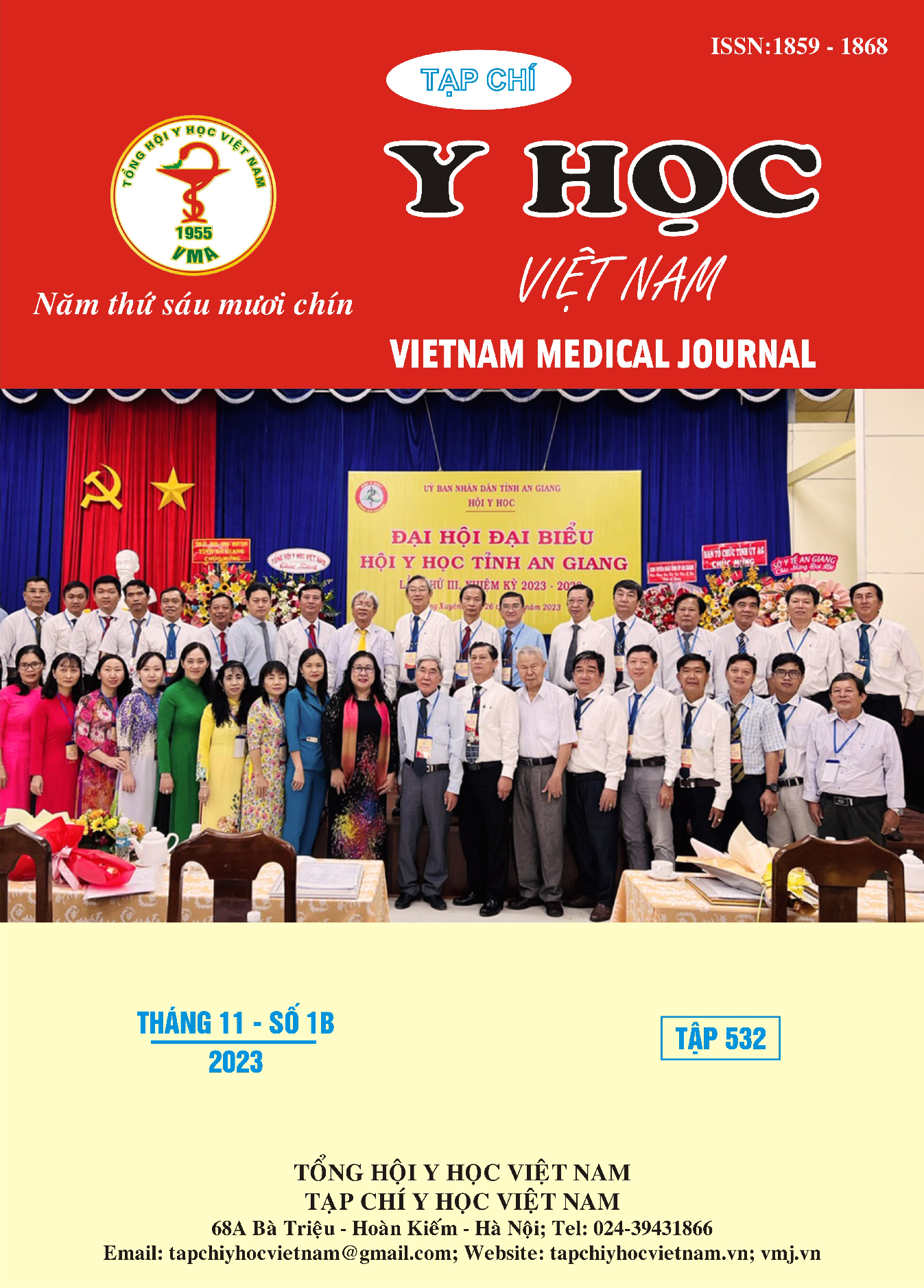CLINICAL FEATURES, MICROBIOLOGY, AND TREATMENT OF HOSPITAL-ACQUIRED PNEUMONIA AT CHILDREN'S HOSPITAL No2 IN 2022-2023
Main Article Content
Abstract
Objectives: To describe clinical, microbiological, and treatment characteristics of hospital-acquired pneumonia (HAP) in children aged 1 months to 15 years old at Children's Hospital No2 from October 2022 to September 2023. Methods: case series. Results: During the period from October 1st, 2022 to September 30th, 2023, there were 30 children diagnosed HAP and included in the study. The mean age was 6.3 ± 2.5 months, and the male: female ratio was 1.2:1. Children under 12 months old accounted for 71.3%, malnutrition 45.1%. The increased or new cough, tachypnea, contraction of accessory respiratory muscles, and pulmonary rales were seen in all patients. Fever accounted for 95.7%. The average time of diagnosis of HAP was 8.3±3.1 (6-15) days after hospitalization. All were late HAP with respiratory failure, including grade 1 (26,6%), grade 2 (36,7%), and grade 3 (36.7%). The culture rate of positive nasal tracheal aspiration (NTA) was 36.7%. The most common pathogens isolated were Stenotrophomonas maltophilia (27.5%), Acinetobacter baumannii (24.1%), Klebsiella pneumoniae (24,1%) and Streptococcus pneumoniae (24,1%). The most commonly used antibiotics were Carbapenem 80% and Vancomycin 60%. There were 73.4% of children received respiratory support. The average duration of respiratory support was 17 ± 5.1 days. The median length of hospital stay was 32 (12-75) days. The mortality rate was 6.7%. Conclusions: The most common bacterial agents causing HAP were Stenotrophomonas maltophilia, Acinetobacter baumannii, Klebsiella pneumoniae, and Streptococcus pneumoniae. It is necessary to use initial antibiotics appropriately to the antibiotic resistance of the bacteria causing HAP to improve treatment results.
Article Details
Keywords
hospital-acquired pneumonia, children
References
2. Trần Mai Phương, Phạm Thị Minh Hồng. Đặc điểm lâm sàng, vi sinh và điều trị viêm phổi bệnh viện tại khoa Hô hấp 1, bệnh viện Nhi Đồng 2 năm 2016-2017. Tạp chí Y học TP Hồ Chí Minh. 2018;22(1):248-255.
3. Ericson JE, McGuire J, Michaels MG, et al. Hospital-Acquired Pneumonia and Ventilator-Associated Pneumonia in Children: A Prospective Natural History Study. The Pediatric infectious disease journal. 2020;39(8):658.
4. Gupta D, Agarwal R, Aggarwal AN, et al. Guidelines for diagnosis and management of community-and hospital-acquired pneumonia in adults: Joint ICS/NCCP (I) recommendations. Lung India: official organ of Indian Chest Society. 2012;29(Suppl 2):S27.
5. Peters L, Olson L, Khu DT, et al. Multiple antibiotic resistance as a risk factor for mortality and prolonged hospital stay: a cohort study among neonatal intensive care patients with hospital-acquired infections caused by gram-negative bacteria in Vietnam. PloS one. 2019;14(5):e0215666.
6. Shahid ASMSB, Alam T, Shahrin L, et al. Risk Factors and Outcomes of Hospital Acquired Pneumonia in Young Bangladeshi Children. Life. 2021;11(10):1030.
7. UNICEF. UNICEF Analysis Based on WHO and Maternal and Child Epidemiology Estimation Group Interim Estimates Produced in September 2019, Applying Cause Fractions for the Year 2017 to United Nations Inter-Agency Group for Child Mortality Estimation Estimates for the Year 2018.


